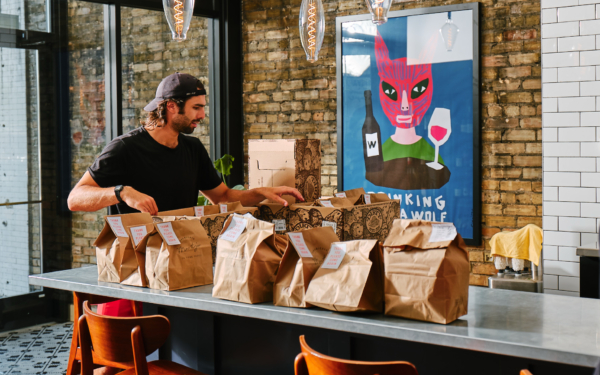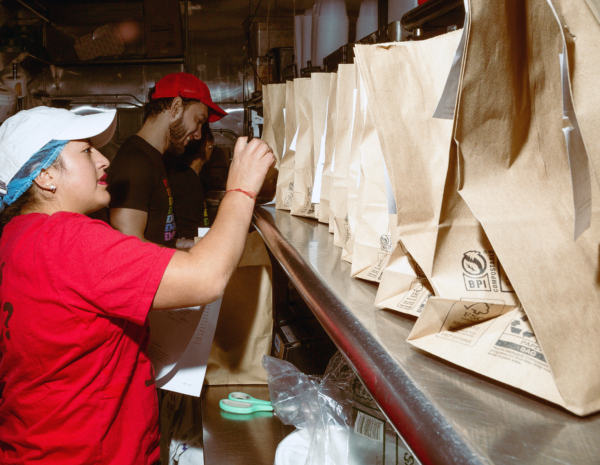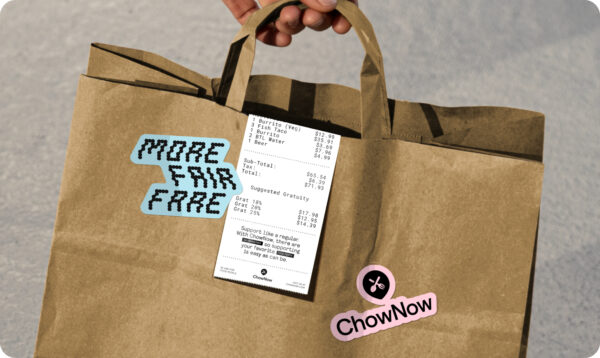How Marketplaces Are Eating Away at Your Restaurant’s Profit Margin

On the surface, third-party marketplace online ordering platforms like Postmates, Grubhub, and Uber Eats may seem like a smart choice for improved restaurant profit margins. After all, it pays to have online ordering, and these services can offer you a large audience of new customers. If you currently work with one of these delivery middlemen, you may very well have a steady stream of orders lighting up your tablet, announcing yet another customer hungry for your food.
The volume of orders, though, masks a sobering truth: these third-party marketplace-style online ordering platforms are eroding your restaurant’s profit margins and undermining your business.
How much do third-party online ordering platforms like Grubhub cost?
Third-party marketplace online ordering platforms charge commissions on each and every order, which can range between 15% to 40%.
Grubhub, for example, might charge you a base of 20% per order just to appear on their site and accept online orders. If your restaurant is in a competitive area and you’re eager for marketing help, though, you’ll want to opt for a sponsored listing, which would place your restaurant near the top of search results.
That, though, might cost 30% of each order instead. Delivery is another 10% of your order. Even if you have your own delivery person and charge your customers a delivery fee, Grubhub will take 10% of that too. All in all, platforms like Grubhub cost you up to 40% of what you take in for each order.
Those commissions add up.
Perhaps you’re not paying anything close to 40% of each order—maybe your third-party online ordering platform charges you 15%, for now at least. Even then, these commissions can put a large dent in your restaurant profit margins.
Say your restaurant operates at a 10% profit margin, which is above average for the industry. On a $50 ticket, you’d actually keep $5 in profit after accounting for your food, supplies, labor, rent, and all the rest. Even if you’re giving just 15% of each ticket to your marketplace, that equates to $7.50, which leaves you with a loss of $2.50.
That loss wouldn’t be significant if it only applied to a customer’s first order. After all, you’re using third-party marketplaces to reach a new audience, right? However, third-party marketplaces like Grubhub cost the same whether it’s a diner’s first or fifteenth order. That $2.50 loss gets multiplied, and you end up paying these marketplaces a massive sum of money to sell your food.
How do middlemen platforms get away with charging such exorbitant fees? In addition to claiming that they perform a valuable marketing service (at a massive cost), they argue that all delivery sales are “incremental” and therefore have different profit margins. There are huge holes in these statements.
The Tide Is Turning
When orders are flowing in, it can be challenging to accurately the true cost of working with Grubhub, Uber Eats, Postmates, and other delivery marketplaces. However, some restaurateurs are waking up and fighting back against the harm that third-party online ordering platforms are causing to their restaurant profit margins.
The New Yorker reported on this problem, interviewing a independent restaurant owner who states, “We know for a fact that as delivery increases, our profitability decreases.” Third-party marketplace online ordering platforms, she continues, are “a far bigger problem than a lot of operators realize.” Another restaurateur admits, “Sometimes it seems like we’re making food to make Seamless profitable.”
Meanwhile, the site Hoodline spoke with a restaurateur who has been forced to close two of his five pizzeria locations. The proprietor notes, “What people don’t realize is that companies like Uber Eats and DoorDash take 23% to 28% of your gross receipts when they deliver your food. Basically, what they’re doing is advertising heavily to steal our business, and selling it back to us at a reduced rate.”
Media outlets all over highlight similar stories about the problem with third-party online ordering platforms harming restaurants’ profits. Here are just a few examples:
- CNN Business: Why Uber Eats and Grubhub Partnerships Are Risky for Restaurants
- NPR: Food Delivery Hits the Web, But Restaurants Pay the Price
- Gizmodo: Stop Using Seamless
- Democrat & Chronicle: Food Delivery Apps Are Impacting Your Favorite Restaurants, Taking a Bite Out of Profits
- Eater: Why Some Restaurants Are Cutting Ties With Mobile Ordering Apps
- Fox Business: Ex-Food Network Star Says Delivery Apps Killing Restaurants
- Boston Globe: You May Love High-End Restaurant Delivery—But the Chefs Kind of Hate It
- Tribeca Citizen: Why Restaurants Hate Grubhub Seamless
- News.com.au [Australia]: Cafe Bans Uber Eats, Calling Food Delivery Platform ‘Incredibly Exploitative’
- TVO [Canada]: How Meal-Delivery Apps Are Hurting Your Favorite Restaurants
- SFist: How Food Delivery Services Are Taking a Bite Out of Restaurant Profits
- SBS News [Australia]: Are Food Delivery Services Worth the Cost for Small Businesses?
- Food & Wine: Uber Eats Is Going to Take a Huge Cut From Restaurants for Delivering Food
- San Francisco Chronicle: Online Order, Delivery Services Taking Bite Out of S.F. Restaurant Profits
- Miami New Times: Delivery Apps Put Miami Restaurants in a Bind
- CNBC: Taco Bell Owner’s $200 Million Deal With Grubhub Gives It a Leg Up on the Competition
- Pittsburgh Post-Gazette: Wary of Third-Party Delivery, Some Restaurateurs Say, ‘It’s a Parasitic Relationship’
- Modern Restaurant Management: Are Online Ordering Services Killing Your Restaurant?
- Bloomberg: What Does Uber Love More: Restaurants or Investors?
- Crain’s Chicago Business: McDonald’s Franchisees Dump on Delivery
- The New York Post: Grubhub Charging Us Even When Our Customers Don’t Order: Restaurant Owners
- The Spoon: Protests Over Waitr’s Fee Structure Highlight How Flawed Third-Party Food Delivery Is—For Everyone
- Crain’s New York Business: Grubhub Competitors Now on the Menu
- Business Insider: Why Using Food Apps Like Grubhub and Postmates Could Lead to the Actual Restaurant Apocalypse
- The New York Times: New York vs. Grubhub
- QSR Magazine: The Delivery Dilemma Rages On For Restaurants
- CNBC: Grubhub, Uber Eats, and DoorDash made online food delivery a $10 billion business. Restaurants aren’t happy about it.
These articles paint a vivid picture: It’s time for restauranteurs to fight back.
At ChowNow, we believe that takeout shouldn’t take out the neighborhood. That’s why we put online ordering back in restaurants’ hands with flat monthly fees and valuable marketing and data provided at no extra cost. Learn more about escaping unfair third-party marketplace fees and ensuring your restaurant profit margins and robust by getting in touch with the ChowNow team.





